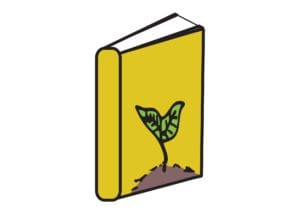Creating Anti-Ableist and Stigma-Free Classrooms
 سیکھیں
سیکھیں
The largest minority group in the U.S. is people with disabilities. Educate yourself on the ableist structures and common stigmas found within educational environments.
 کوشش کریں
کوشش کریں
If a student works with a 1:1 Paraprofessional and you’re giving an instruction to the student, make eye contact and directly speak to the student first, not assisting companions.
 کوشش کریں
کوشش کریں
Ask students with speech or hearing impairments for the modes of communication they are most comfortable with before beginning your lesson.
![]() یاد رکھنا
یاد رکھنا
Be intentional about introductions. How you introduce yourself and how you create opportunities for others to creatively introduce themselves and self-identify can set the tone for your time with students.
ٹپ:
شناخت کی طرح، معذوریاں ہمیشہ آسانی سے قابل توجہ نہیں ہوتی ہیں۔ جو کچھ نہیں دیکھا جا سکتا ہے اس کے بارے میں آگاہی، احترام اور حساسیت رکھیں۔
The Impact of Ableism and Stigma Matter
Understanding ableism and stigma and its impact on individuals and classrooms empowers you to be a compassionate educator who preserves and protects the dignity and lived experience of students with disabilities. This awareness can also support you in advocating for the rights of disabled students in the school and beyond.
Ableism…
- isolates individuals;
- segregates learners;
- infects policymaking;
- emerges as structural and social discrimination.
اپنی زبان کا خیال رکھیں
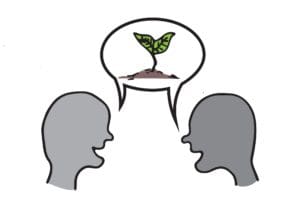
Image credit: Jean Wong
الفاظ میں طاقت ہوتی ہے۔ آپ جو زبان استعمال کرتے ہیں اس کا اثر کسی فرد کے اپنے یا دوسروں کے تاثرات پر پڑ سکتا ہے۔
زبان زبانی اور غیر زبانی ہے۔ باڈی لینگویج اور پیرا لینگویج اکثر اس سے زیادہ بات چیت کرتے ہیں جس کا اظہار ہم الفاظ سے کر رہے ہیں۔
آپ کی آواز کا لہجہ سننے والے کے لیے اتنا ہی اہم ہے جتنا کہ آپ کی تحریر کا لہجہ آپ کے قاری کے لیے ہے۔ آپ کا لہجہ آپ کا مشاہدہ کرنے والے طلباء کے لیے آپ کے رویے اور احترام کا اظہار کرتا ہے۔ اپنی ترسیل کا خیال رکھیں۔
میں مزید جانیں جامع زبان گائیڈ دیں۔.
کسی بھی زبانی اشارے سے ہوشیار رہیں
“As you talk about someone with a mental illness, you may pair certain words with a change in your tone of voice. For example, you may whisper the terms depression or bipolar. People pick up on these cues, which communicate depression stigma to the listener.”—Melissa Pinto, PhD, RN
تعارف کے بارے میں جان بوجھ کر رہیں
اس بات پر غور کریں کہ آپ اپنا تعارف کیسے کراتے ہیں اور دوسروں کے لیے خود کو متعارف کرانے اور خود کو پہچاننے کے مواقع کیسے پیدا کرتے ہیں۔
چاہے آپ کسی معذور، غیر معذور، یا دوسری صورت میں شناخت کرتے ہیں، جب آپ طلباء یا اسکول کے شراکت داروں سے ملتے ہیں تو اسے اپنے تعارف کے حصے کے طور پر شامل کرنے پر غور کریں، جیسا کہ آپ کے لیے آرام دہ ہے۔ طلباء کو بتائیں کہ آپ غلطیاں کر سکتے ہیں، آپ ان کے بارے میں جاننا چاہتے ہیں، اور آپ کے اختیار میں جو کچھ ہے اس میں تبدیلی کرنے کی ذمہ داری لیں گے۔
جب آپ اپنا تعارف طلباء کے نئے گروپ سے کرتے ہیں:
- منتخب کریں کہ آپ کن شناختوں کا اشتراک کرنے میں آسانی محسوس کرتے ہیں اور کس چیز کو ترجیح دینی ہے۔
- Consider how your introduction can open up communication and raise awareness about multiple identities and implicit bias. How can you normalize difference and destigmatize identities? What are the risks?
- ان سوالات کے لیے وقت چھوڑیں، اور جواب دینے کے لیے تیار رہیں، جو سوالات سامنے آسکتے ہیں۔
طلباء کے لیے ایک موقع کی منصوبہ بندی کریں کہ وہ اپنا تعارف کرائیں، بیان کریں اور بتائیں کہ وہ کس طرح خود کو پہچانتے ہیں۔ اپنی منصوبہ بندی میں اس بات پر غور کریں کہ آپ لوگوں کے گروپ، کلاس روم کے ماحول، اور طلباء کے ساتھ آپ کے پاس کتنا وقت ہے کے بارے میں آپ کیا کرتے ہیں اور کیا نہیں جانتے۔ خطرے کی کونسی سطح درست معلوم ہوتی ہے؟
Here are some sample activity ideas.
- Freewriting: “What you need to know about me is…”
- This can be further worked on to become an artist statement, poem, or other creative piece.
- Drawing/Painting: Invite students to draw or paint who they are or what they look like.
- It could be a literal self-portrait or more of an abstract interpretation.
- "میں یہاں سے ہوں..." یا اس سے ملتے جلتے دوسرے اشاروں کو مختلف شعبوں میں استعمال کیا جا سکتا ہے۔
- Creative movement: Invite students to introduce themselves with a physical gesture.
- طالب علموں کو مدعو کریں کہ وہ کسی ایسے فنکار یا آرٹ ورک کے بارے میں انتخاب کریں اور اس کا اشتراک کریں جس سے وہ شناخت کرتے ہیں اور کیوں۔
- طالب علموں کو مدعو کریں کہ وہ ایک فنکارانہ ٹکڑا کے لیے ایک شناخت کا انتخاب کریں جسے وہ انفرادی طور پر یا گروہوں میں تخلیق کریں گے، ان میں سے ہر ایک کے لیے کیا اہم ہے اس کی نمائندگی کرنے کے طریقے تلاش کریں۔
GIVE میں مزید دریافت کریں۔ معذوری اور دیگر شناختی وسائل کی تقطیع.
کلاس روم میں باشعور رابطہ کار بنیں۔
| کیا | مت کرو |
|---|---|
| آنکھ سے رابطہ کریں اور پہلے طالب علم سے براہ راست بات کریں، ساتھی کی مدد نہ کریں۔ | طالب علم کے ساتھ بات چیت کا ترجمہ کرنے کے لیے کلاس روم ٹیچر یا پیرا پروفیشنل پر انحصار کریں۔ |
| گویائی کی خرابی والے طلباء سے بات چیت کے ان طریقوں کے بارے میں پوچھیں جن سے وہ سب سے زیادہ آرام دہ ہیں۔ | اندازہ لگائیں کہ ایک طالب علم زبانی یا جسمانی طور پر کیا اظہار کرنے کی کوشش کر رہا ہے۔ اس کے بجائے، وضاحت طلب کریں۔ |
| طلباء کے ساتھ باعزت لیکن عام زبان اور لہجے کا استعمال کریں تاکہ انہیں کمیونٹی میں شامل ہونے کا احساس دلانے میں مدد ملے۔ | فرض کریں کہ ایک طالب علم بنیادی ہدایات کو نہیں سمجھ سکتا جب تک کہ آپ کے پاس واضح اشارہ نہ ہو۔ |
Plant Seeds of Confidence and Self-Esteem by Trusting That Students Are Able
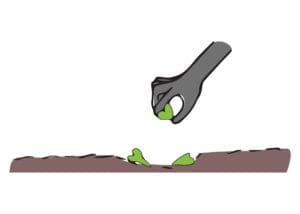
Image credit: Jean Wong
Lead With Empathy
Try to set aside preconceived notions about your students and be open to newness and possibility. Developing a genuine appreciation for each unique student and their individual lives creates limitless opportunities for empathy.
جسم کے سات حقوق
These seven rights to the body are a consensus of shared values gathered from Eastern and Indigenous philosophy, religious beliefs, and human rights organizations. You can use these rights as a pedagogical guide to create a safe space for all learners and empower them to be advocates for themselves.
- موجود ہونے کا حق - کسی بھی جگہ پر موجود ہونا۔
- The Right to Feel—to experience and express emotions.
- The Right to Act—to express yourself in your own way.
- The Right to Love and be Loved—to lead with your heart.
- The Right to Speak—to articulate yourself in a verbal or nonverbal way.
- The Right to See—to notice or sense your own way.
- The Right to Know—to understand.
سوال کیا آپ نے سچ مان لیا ہے۔
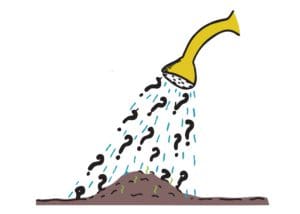
Image credit: Jean Wong
“People may assume someone with depression or another mental illness is unstable, lazy, untrustworthy, unintelligent, or incapable, when that’s not the case.”—Mary Pender Greene, LCSW-R
اپنے مفروضوں کو چیک کریں۔
کلاس روم میں داخل ہونا اور طالب علم کے طرز عمل پر لیبل تفویض کرنا آسان ہے۔ غلطی سے بچے کی کارکردگی کو دلچسپی کی کمی یا عمومی نااہلی سے منسوب کرنا آپ کی ہدایات اور ان کی سیکھنے کی صلاحیت پر بھروسہ کرنے میں رکاوٹ بن سکتا ہے۔ یہ نادانستہ طور پر طلباء کے ساتھ مثبت تعلقات استوار کرنے کے آپ کے موقع کو بھی نقصان پہنچا سکتا ہے۔ اس کے علاوہ، سیاہ فام، غیر سفید فام اور معذور طالب علموں کو ان معذوروں کے ساتھ سفید فام طلباء کے مقابلے میں زیادہ تادیبی کارروائیاں ملتی ہیں۔
GIVE میں مزید جانیں۔ طلباء کے درمیان مثبت تعلقات استوار کرنے کا وسیلہ.
ابہام کو گلے لگائیں۔
کسی موضوع پر اتھارٹی نہ بننا ٹھیک ہے۔ کلاس روم میں، طالب علم پر مبنی ڈیزائن مشترکہ تخیل میں ہوتا ہے۔ جب ہم نتائج کو کنٹرول کرنے کی ضرورت کو جاری کرتے ہیں، تو ہم اختراع کے لیے جگہ بناتے ہیں۔
خود کی عکاسی کے لیے وقت نکالیں۔
- How do I currently talk around and about people with visible and invisible disabilities?
- زبان کے کون سے طریقے ان کمیونٹیز کو عزت دیتے ہیں؟
- ان کمیونٹیز کو کون سے زبان کے طریقے پیتھولوجائز کرتے ہیں؟
- Have I depended on the Classroom Teacher or the Paraprofessional for translating communication with the student, or handling a student I don’t feel comfortable interacting with?
- ایک فنکار یا فرد کے طور پر میرے زندہ تجربے میں مجھے اپنے سات حقوق سے کیسے انکار کیا گیا؟
- میں نے کلاس روم میں طلباء کو ان کے حقوق سے محروم ہوتے کیسے دیکھا؟
- میں نے کس طرح طالب علموں کو سہولت یا فنکاری میں جسم پر ان کے حقوق سے انکار کیا؟
- اگر ہمیں اس کا جواب معلوم ہوتا جب ہم نے شروع کیا، تو ہم کیا سیکھ سکتے ہیں؟
- ہم تخلیقی حل کیسے نکال سکتے ہیں؟
- ہم جن لوگوں کے لیے ڈیزائن کر رہے ہیں وہ ہماری رہنمائی کہاں کریں گے؟
تمام طلباء کے درمیان مساوات پیدا کریں۔
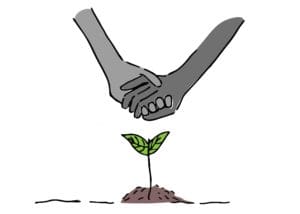
Image credit: Jean Wong
طلباء کے بارے میں بنائے گئے مفروضوں سے دور ایڈجسٹ کریں۔
Take a moment to check or notice assumptions in the language used around or about your students, or in any actions taken, and make adjustments as necessary.
- Instead of: “He cannot sit still and pay attention long enough to do anything.”
- Try: “How can we make the activity more physically engaging for everyone?”
- Instead of: “She can’t read out loud. She’s too slow.”
- Try: “Let’s give her time and support while she reads.”
- کے بجائے: “I don’t think he can be the lead. The audience may get uncomfortable seeing him and hearing him like that.”
- Try: “Let’s give him the lead. If he feels like he needs a buddy to do parts of the scene, we can split the role.”
- Instead of: “You may not be able to do this activity; you can be our audience.”
- Try: “Would you like to try this activity? If so, we’ll support you.”
- Instead of: “I don’t know what is wrong with her. She is just so disruptive and shouldn’t participate.”
- Try: Avoid singling out students with these disabilities before entering the room. Design lesson plans that include moments for emotional literacy, journaling, and exploration as a first step. Introduce tools and spaces for self-regulation or support on the first day.
Work Toward Educational Equity
Our culture is filled with ableist representations and ideas that inform all of our lives. What assumptions do you make about
- what a student is capable of?
- how a student speaks or communicates?
- how a student uses their body?
- what a “good student” looks like?
- what it means or looks like to try or work hard?
- what it means or looks like to be actively listening?
- whether someone is the “right fit” for an activity or role?
- how a student might feel if they try something and fail?
- what an audience will expect a performer to look/sound like?
How can you use your content, language, and the art you share to move away from assumptions and toward educational equity for your students?
Stigma کے ارد گرد گفتگو میں فنکار
میسون زید, Comedian, Actress, Disability Advocate, and Tap Dancer
“‘I have cerebral palsy. I shake all the time,’ Maysoon Zayid announces at the beginning of this exhilarating, hilarious talk. (Really, it’s hilarious.) ‘I’m like Shakira meets Muhammad Ali.’ With grace and wit, the Arab-American comedian takes us on a whistle-stop tour of her adventures as an actress, stand-up comic, philanthropist, and advocate for the disabled.” This talk was presented at an official TED conference. TEDWomen 2013.
ایڈم پیئرسن, Broadcast Journalist, Actor, Advocate, and Motivational Speaker
"ایڈم ان اہم اسباق کا اشتراک کرے گا جو اس نے سیکھے ہیں اور لوگوں کی نظروں میں اپنے لیے ایک کیریئر بناتے ہوئے، اس کی بدنظمی سے منسلک بدنما داغ پر قابو پاتے ہوئے"۔ یہ گفتگو ایک سرکاری TED کانفرنس میں پیش کی گئی۔ ٹی ای ڈی ایکس برائٹن 2017۔
لنڈسے ایبرومائٹس سمتھ, Artist, Writer, and Healer
“I am most proud of the fact that I am still thriving despite my body becoming differently abled. I think my best work has come out of pushing against my limitations.”
لنڈسے ابرومیٹس-سمتھ اپنی پوری زندگی آرٹ بناتی رہی ہیں۔ 2012 میں ALS کی تشخیص ہونے سے پہلے، لنڈسے نے کٹھ پتلیوں کے فنکار، مجسمہ ساز، اور مساج تھراپسٹ کے طور پر کام کیا۔ اگرچہ اب اس کے پاس اپنے بازوؤں اور ہاتھوں کا استعمال نہیں ہے، لیکن وہ پینٹ کرنے کے لیے اپنے پیروں کا استعمال کر کے تخلیقی انداز میں اپنا اظہار کرتی رہتی ہے۔
“Living with ALS is the most difficult thing I have ever done. It has given me so many opportunities to slow down, figure out what is important to me, and shift my perspective on the world.”
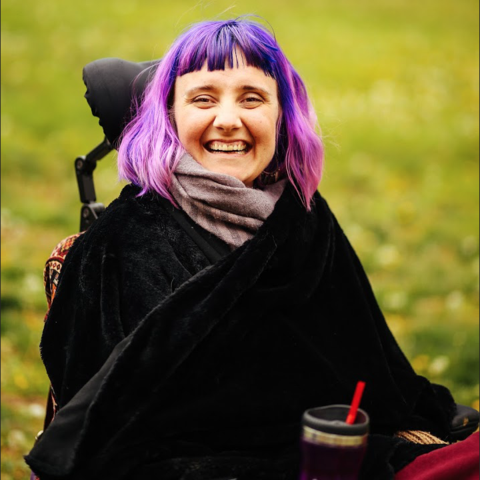
GIVE ریسورس میں معذور فنکاروں کو نمایاں کرنے کے بارے میں مزید جانیں: جامع نصاب اور معذور فنکاروں کی نمائش.

